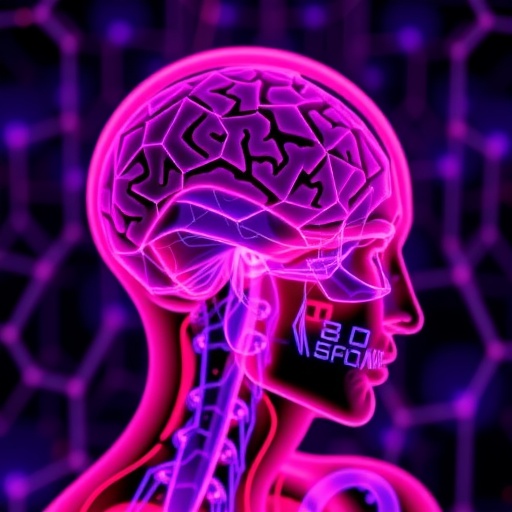In a groundbreaking study published in the eminent journal npj Parkinson’s Disease, researchers have harnessed the power of computer vision technology to unravel three fundamental dimensions underlying levodopa-responsive motor improvements in Parkinson’s disease. This pioneering work promises to revolutionize how clinicians and scientists understand motor symptomatology in Parkinson’s, offering unprecedented insights into the nuanced effects of levodopa therapy, the frontline pharmaceutical intervention for this debilitating neurodegenerative disorder.
The research team, led by Lange, Guarin, Ademola, and collaborators, employed advanced computer vision algorithms to meticulously analyze high-resolution video recordings of Parkinson’s patients undergoing levodopa treatment. Unlike traditional clinical assessments, which often rely on subjective rating scales, this objective digital approach quantifies subtle motor changes that are otherwise imperceptible to human observers. By translating complex movement patterns into rich datasets, the study propels the neurology field into an era of precision medicine, tailoring therapeutic strategies based on individual motor profiles.
Parkinson’s disease is characterized primarily by the progressive loss of dopaminergic neurons, leading to hallmark motor symptoms such as tremors, rigidity, slow movement (bradykinesia), and postural instability. While levodopa remains the gold standard for symptomatic treatment, clinicians have struggled to precisely characterize the heterogeneity in patient responses. The novel application of computer vision here addresses this challenge by distilling the diversity of motor improvements into three core dimensions that comprehensively describe patients’ levodopa responsiveness.
Central to the study’s methodology is the deployment of machine learning models trained on video datasets capturing patients performing standardized motor tasks before and after levodopa administration. The algorithms automatically extract key kinematic parameters, including joint angles, movement velocity, amplitude, and coordination metrics, converting visual data into objective scores. This technique enables detailed mapping and temporal tracking of motor function changes, providing a granular view that surpasses conventional clinical rating scales such as the Unified Parkinson’s Disease Rating Scale (UPDRS).
The elucidated three fundamental dimensions of motor improvement reflect distinct but interrelated facets of levodopa efficacy. The first dimension captures enhancement in movement amplitude and speed, highlighting improvements in bradykinesia and hypokinesia, core motor deficits of Parkinson’s. The second dimension reflects changes in movement coordination and fluidity, shedding light on subtle aspects of motor control that impact fine motor skills and gait stability. The third dimension pertains to reduction in tremor amplitude and irregularity, a primary and visually obvious symptom that nonetheless exhibits complex pharmacodynamics.
Interestingly, the study reveals that these motor dimensions respond differentially to levodopa, suggesting a layered neural and pharmacological architecture underlying symptom relief. For example, while bradykinesia-related parameters improve rapidly post-dosing, tremor reduction demonstrates more variable trajectories among individuals, underscoring the heterogeneity of Parkinson’s pathophysiology and treatment response. This nuance might explain why some patients exhibit excellent gross motor improvements yet continue to suffer from tremor or dyskinesias.
Beyond its clinical implications, this approach lays the groundwork for objective biomarkers that could accelerate drug development and personalized medicine in Parkinson’s disease. By quantifying the motor response space with unprecedented precision, pharmaceutical trials can better stratify patient subgroups, monitor therapeutic trajectories longitudinally, and identify novel drug targets addressing specific motor domains. Importantly, this quantitative framework reduces reliance on subjective clinician assessments, which, despite training, are inherently variable and limited in sensitivity.
Moreover, the study’s application of computer vision exemplifies the transformative potential of artificial intelligence in neurology. The fusion of digital technology with clinical neuroscience opens new vistas for continuous, real-world monitoring of patients beyond clinical settings. Patients can be recorded at home using smartphones or wearable cameras, enabling remote assessment of motor function fluctuations, medication adherence, and response patterns with minimal patient burden. Such capabilities pave the way for adaptive treatment regimens finely tuned to everyday needs.
The work also sparks intriguing fundamental science questions regarding the neural correlates of these three motor dimensions. It invites further exploration into circuits within the basal ganglia, cerebellum, and motor cortex and their differential modulation by dopaminergic therapy. Through complementary neuroimaging and electrophysiology studies, future research can unravel how levodopa restores or reorganizes these networks to produce specific improvements, bridging the gap from molecule to movement.
While highly promising, the study acknowledges limitations including a relatively homogeneous patient cohort and standardized task paradigms that may not capture all nuances of spontaneous motor behavior. Scaling this methodology to diverse populations and ecologically valid motor contexts remains a crucial next step. Likewise, integration with non-motor symptom tracking, such as cognitive or autonomic measures, could offer a more holistic assessment of levodopa’s multifaceted impacts.
This research embodies a paradigm shift in Parkinson’s motor symptom assessment, moving away from coarse clinical scales toward a data-driven, mechanistic understanding facilitated by cutting-edge computer vision analytics. Its findings hold immense promise for transforming clinical practice, enabling neurologists to deliver truly personalized levodopa regimens that maximize functional gains while minimizing adverse effects.
As the global burden of Parkinson’s disease continues to rise, innovations like these are vital to improving patient quality of life and reducing healthcare costs. By illuminating the complex landscape of motor symptom improvement through objective quantification, this study empowers clinicians, researchers, and patients alike, forging a path toward better, more tailored therapies grounded in rigorous digital phenotyping.
The convergence of AI, neuroscience, and clinical neurology evidenced here exemplifies the future of neurodegenerative disease management—one where technology not only supports but fundamentally enhances human clinical judgement. The ability to decode the subtle motor signatures of levodopa responsiveness marks a milestone in our quest to unravel Parkinson’s mysteries and ultimately conquer them.
Subject of Research: Motor symptom improvements in Parkinson’s disease responsive to levodopa treatment analyzed via computer vision technology.
Article Title: Computer vision uncovers three fundamental dimensions of levodopa-responsive motor improvement in Parkinson’s disease.
Article References: Lange, F., Guarin, D.L., Ademola, E. et al. Computer vision uncovers three fundamental dimensions of levodopa-responsive motor improvement in Parkinson’s disease. npj Parkinsons Dis. 11, 140 (2025). https://doi.org/10.1038/s41531-025-00999-w
Image Credits: AI Generated




